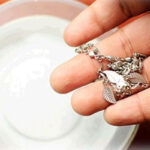Aluminum foil has a variety of uses in the kitchen beyond just wrapping food for baking or air-frying. It is a versatile and inexpensive tool that can be used in many creative ways.
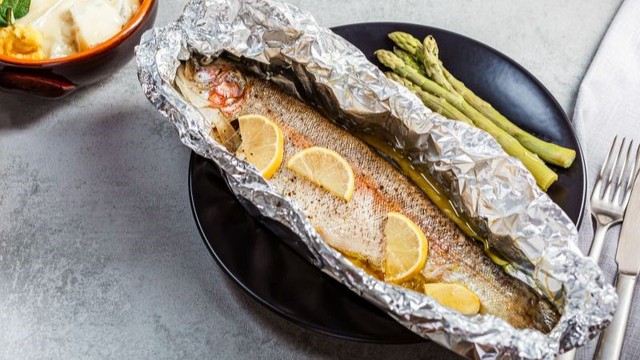
Aluminum foil is commonly used to wrap food for baking. (Illustrative image)
For instance, a recent article on Aboluowang pointed out that using aluminum foil solely for baking is wasteful. This versatile material has many other uses and is considered a cheap yet invaluable resource in the kitchen.
Other Uses for Aluminum Foil
1. Prevent Bananas from Turning Black
Bananas, when left at room temperature for an extended period, tend to develop dark spots on their peel. Aluminum foil can help prevent this from happening.
Simply wrap the top of the banana bunch with foil. This will slow down the release of ethylene gas, delaying the ripening process and preventing the appearance of black spots. This technique can also be applied to other vegetables like celery and carrots, which are typically stored in the refrigerator to prolong their shelf life.
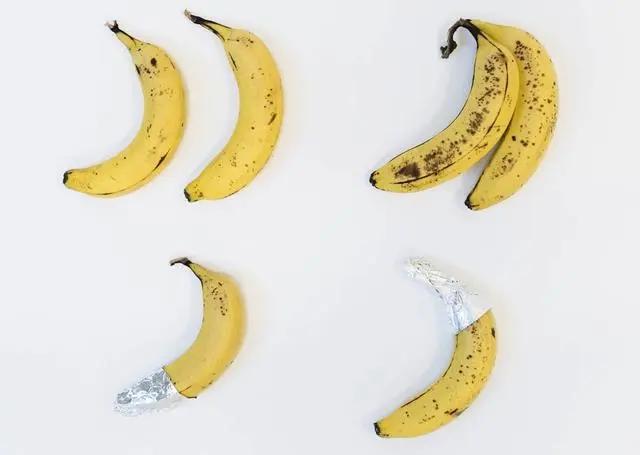
Illustrative image
2. Clean Root Vegetable Peels
Root vegetables like ginger, potatoes, and taro can be challenging to clean. Aluminum foil can be a helpful tool in this situation.
Crumple a sheet of foil into a ball and use it to scrub the dirt and impurities off these vegetables. This method is also used in some restaurants to expedite kitchen tasks.
3. Seal Plastic Bags
Aluminum foil can come to the rescue when you have a plastic bag that won’t seal shut. Cover the opening of the bag with a piece of foil and run a moderately hot iron along the edge. The heat will seal the bag shut, with the foil providing an extra layer of protection.
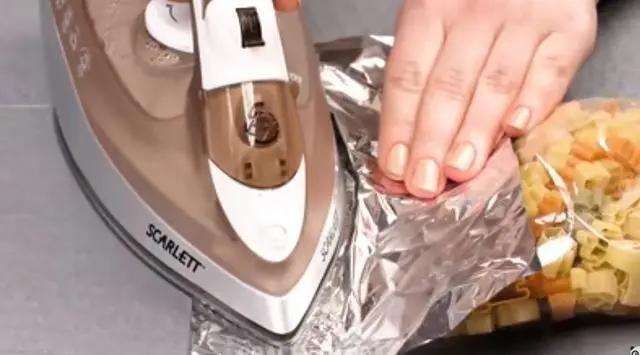
Illustrative image
4. Remove Stains from Metal Kitchen Utensils
Aluminum foil isn’t just for cooking; it can also be used for cleaning. According to Aboluowang, foil can effectively remove dust and black stains from metal kitchen utensils.
Here’s how:
– Crumple a sheet of foil into a ball
– Use the foil ball to scrub the stained areas, such as the bottom of pots, pans, baking racks, and air fryer baskets
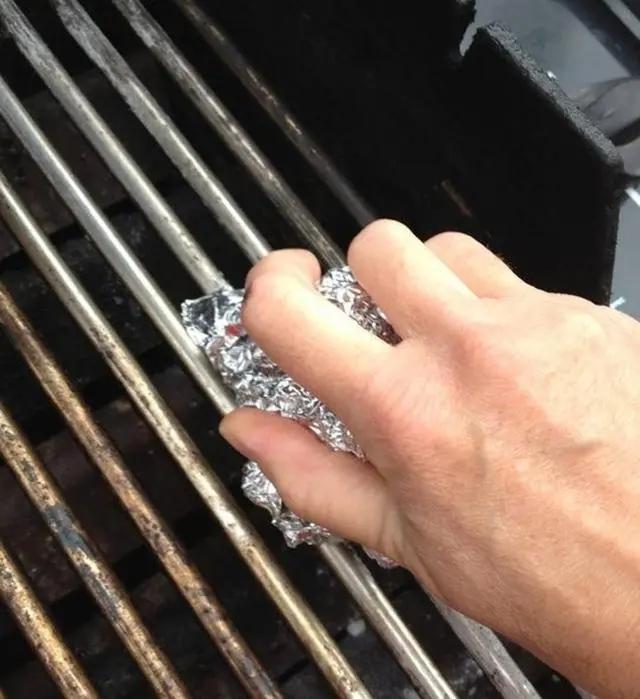
Illustrative image
The crumpled foil acts like a metal scouring pad, but it’s important to note that you shouldn’t use it on non-stick or enameled cookware as it may scratch and damage the coating.
5. Sharpen Scissors and Knives
If your scissors or knives have become dull over time, you can use aluminum foil to sharpen them. Simply crumple a piece of foil and use it to sharpen your blades. For scissors, cut through the foil a few times, and you’ll notice a significant improvement.

Illustrative image
6. Make a Funnel
Due to its rigidity and waterproof nature, aluminum foil can be fashioned into a handy funnel for pouring liquids into narrow-necked bottles or jars. After using it as a funnel, the foil can still be utilized for other tasks like sharpening blades or cleaning kitchenware.
7. Speed Up Food Freezing
Aluminum foil has excellent heat conduction and retention properties. This means it can not only speed up cooking and warming food but also accelerate the freezing process.
When storing food in the refrigerator or freezer, wrap it in aluminum foil first. This will significantly reduce the time it takes to freeze or chill the food.
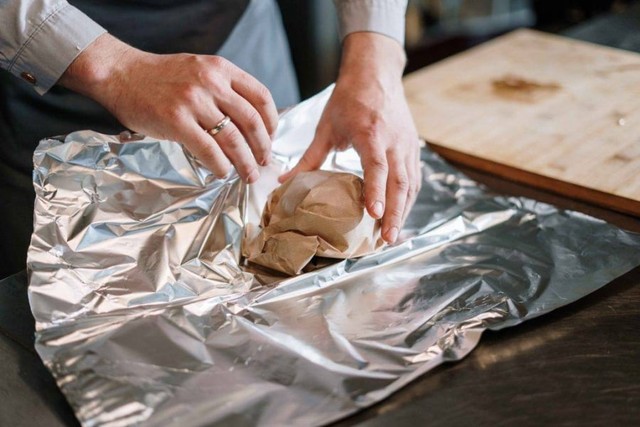
Illustrative image
Despite its numerous uses, there are a few precautions to keep in mind when using aluminum foil in the kitchen. Experts advise the following:
– Do not use foil in the microwave.
– Avoid wrapping acidic foods like lemons, vinegar, tomatoes, salt, or any spices containing alcohol in aluminum foil.
– Both sides of the foil can be used to wrap food, but the shiny side reflects heat better.
– When using foil in the oven, avoid setting the temperature too high to prevent burning.
The Magic Foil Ball: Unraveling the Surprising Benefits of a Simple Hack
 Foil Ball: Unraveling the Surprising Benefits of a Simple Hack’>
Foil Ball: Unraveling the Surprising Benefits of a Simple Hack’>This method is deceptively simple yet remarkably effective.
Most Flight Attendants Always Carry a Banana On Board. But Why?
It’s a well-known fact that most flight attendants always carry a banana with them when they’re on a flight. But why? Well, it’s their little health secret to staying energized and healthy while working long hours and dealing with jet lag.
The Top Foods That Should Never Be Refrigerated
Introducing the world of food storage: a delicate balance of preserving freshness and maintaining flavor. While the refrigerator is a handy tool for keeping your groceries in check, certain foods are better off outside its chilly confines. Uncover the surprising truth about common foods that thrive when kept at room temperature, and learn how to optimize your kitchen habits for the ultimate culinary experience. Prepare to rethink your food storage strategies and embrace a whole new world of flavor!
The Ultimate Guide to Silver Cleaning: Instant Shine, No Fuss!
Introducing the ultimate guide to bringing your dull and tarnished silver back to life! With these simple and effective traditional tips and tricks, you can easily restore your silver items to their original sparkling glory. Imagine having your silverware and jewelry looking brand new again, impressing your guests and adding a touch of elegance to your home. Say goodbye to dull and faded silver, and hello to a brilliant shine!




























